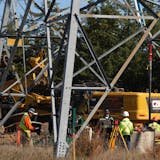The relationship between U.S. businesses and their employees is undergoing a profound shift: For the first time in a generation, workers are gaining the upper hand.
The change is broader than pandemic-related signing bonuses at fast-food places. Up and down the wage scale, companies are becoming more willing to pay a little more, to train workers, to take chances on people without traditional qualifications and to show greater flexibility in where and how people work.
The erosion of employer power began during the low-unemployment years leading up to the pandemic and, given demographic trends, could persist for years.
A record number of positions were open in March, according to federal data that go back to 2000, and workers were voluntarily leaving their jobs at a rate that matches its historical high. Burning Glass Technologies, a firm that analyzes millions of job listings a day, found that the share of postings that say "no experience necessary" has risen two-thirds over 2019 levels, while the share of those promising a starting bonus has doubled.
People are demanding more money to take a new job. The "reservation wage," as economists call the minimum compensation workers would require, was 19% higher for those without a college degree in March than in November 2019, a jump of nearly $10,000 a year, according to a survey by the Federal Reserve Bank of New York.
Employers are feeling it: A survey of human resources executives from large companies conducted in April by the Conference Board, a research group, found that 49% of organizations with a mostly blue-collar workforce found it hard to retain workers, up from 30% before the pandemic.
"Companies are going to have to work harder to attract and retain talent," said Karen Fichuk, who as CEO of the giant staffing company Randstad North America closely tracks supply and demand for labor. "We think it's a bit of a historic moment for the American labor force."
This recalibration between worker and employer partly reflects a strange moment in the economy. It is reopening, but many would-be workers are not ready to return to the job.


